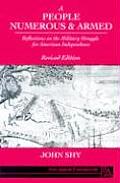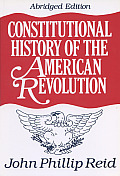Yesterday I mentioned how
John Beaird, the instigator of war with the
Cherokee in the Southwest Territory in 1793, eventually moved to Illinois with his family and
slaves.
But Illinois was part of the old
Northwest Territory. In 1787 the confederation
Congress’s Northwest Ordinance outlawed slavery there. So how did Beaird’s move work out?
In practice, the government dragged its feet about ending slavery. Some
French settlers already in that territory owned slaves, and the first U.S. governor, Revolutionary War general
Arthur St. Clair, took no action against the practice. When Americans from slave states first moved into the western Northwest Territory, they were also generally allowed to keep their human property. That appears to be what John Beaird did in 1801.
Here’s what the
Combined History of Randolph, Monroe and Perry Counties, Illinois (1883) says about John Beaird:
Then comes an inventory of the estate of John Beaird, dated March 13th, 1809. Beaird must have been farming extensively; the inventory mentions seventeen horses, worth from $45 to $100 each, two yoke of oxen, wagons, plows, six sets of harness, etc., a “mulatto negro” worth $350, and a black boy worth $250.
At the subsequent estate sale, “The negro boy ‘Berry’ was sold to John Beaird, Jr., for $450, the other brought only $225.”
The legal situation shifted a little in 1803 when Ohio became a free state. In September 1807 the Indiana Territory (including Illinois) passed a
law forbidding slave owners from bringing in human property. But that didn’t mean immediate emancipation because:
- Within thirty days of entering, owners could go to the county clerk and make out an agreement for their slaves to continue working as indentured servants. If slaves refused the deal offered, owners had another sixty days to send them back into slave territory.
- Slaves under the age of fifteen could be indentured only until men turned 35 and women turned 32.
- Children born to indentured people would be indentured themselves until age 30 for men and 28 for women.
In 1814, the year after Indiana became a free state, the Beaird family must have felt some pressure to put their ownership of people on a more secure legal footing. On 17 October, Joseph Beaird had two workers—
James, aged about 18, and
Charles, 27—sign indentures agreeing to work for him for the next 65 years. Beaird promised each man $50 at the end of that term. Of course, by then they would most likely all be dead.
On the same day, John Beaird, Jr., made out similar indentures for three boys and one girl:
- Harry, aged about 16, for 80 years.
- Annaky, about 16, for 80 years.
- Welden, about 16, for 80 years.
- Peter, about 21, for 75 years.
The indenture for Harry read:
St. Clair county, Illinois territory. ss. Be it remembered that on the 17th day of October of the year 1814, personally came before me the subscriber, clerk of the court of common pleas of the said county, John Beaird of said county, and Harry, a negro boy, aged near upon sixteen, and who of his own free will and accord, did in my presence, agree, determine, and promise, to serve the said John Beaird, for the full space of time, and term of eighty years from this date. And the said John Beaird, in consideration thereof, promises to pay him, said Harry, the sum of fifty dollars, at the expiration of his said service. In testimony whereof, they have hereunto set their hands and seals the day and year first herein above written. Interlineation made before signing.
Mark of X Harry. [seal.]
John Beaird. [seal.]
Signed and sealed in presence of John Hay, C. C. C. P.
Was Harry the same as the “negro boy ‘Berry’” that John Beaird, Jr., had bought from his father’s estate six years before? It’s possible. In a later court case Beaird’s heirs claimed that he had brought Harry in from Tennessee just one week before signing those indentures, making the arrangement fit within the 1807 law. But that could have been a lie for legal reasons. Likewise, were all three of those sixteen-year-olds really just a little too old for the shorter indenture period?
The future of slavery in Illinois was foggy in those years. Periodically politicians floated proposals to formally allow slavery or to completely end it sometime in the future, but they never found a compromise everyone would accept. The first state constitution of 1818 avoided the subject. An attempt five years later to make slavery explicitly legal failed.
By turning their slaves into indentured servants—indentured for what would be their expected lifetimes—the Beairds sidestepped that debate. But the legalities didn’t really fool anyone. In the 1820 census, Joseph A. Beaird was
listed as owning eight slaves.
TOMORROW: What happened to Harry?






